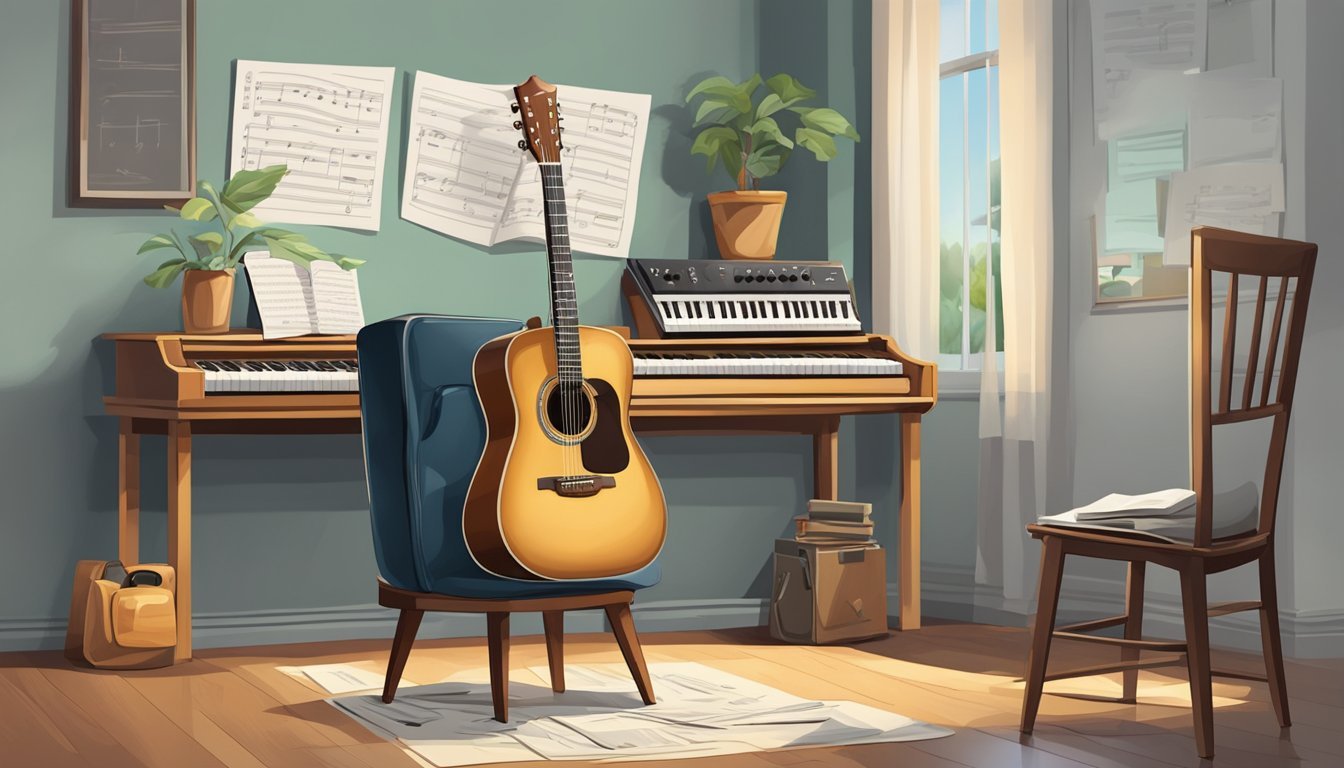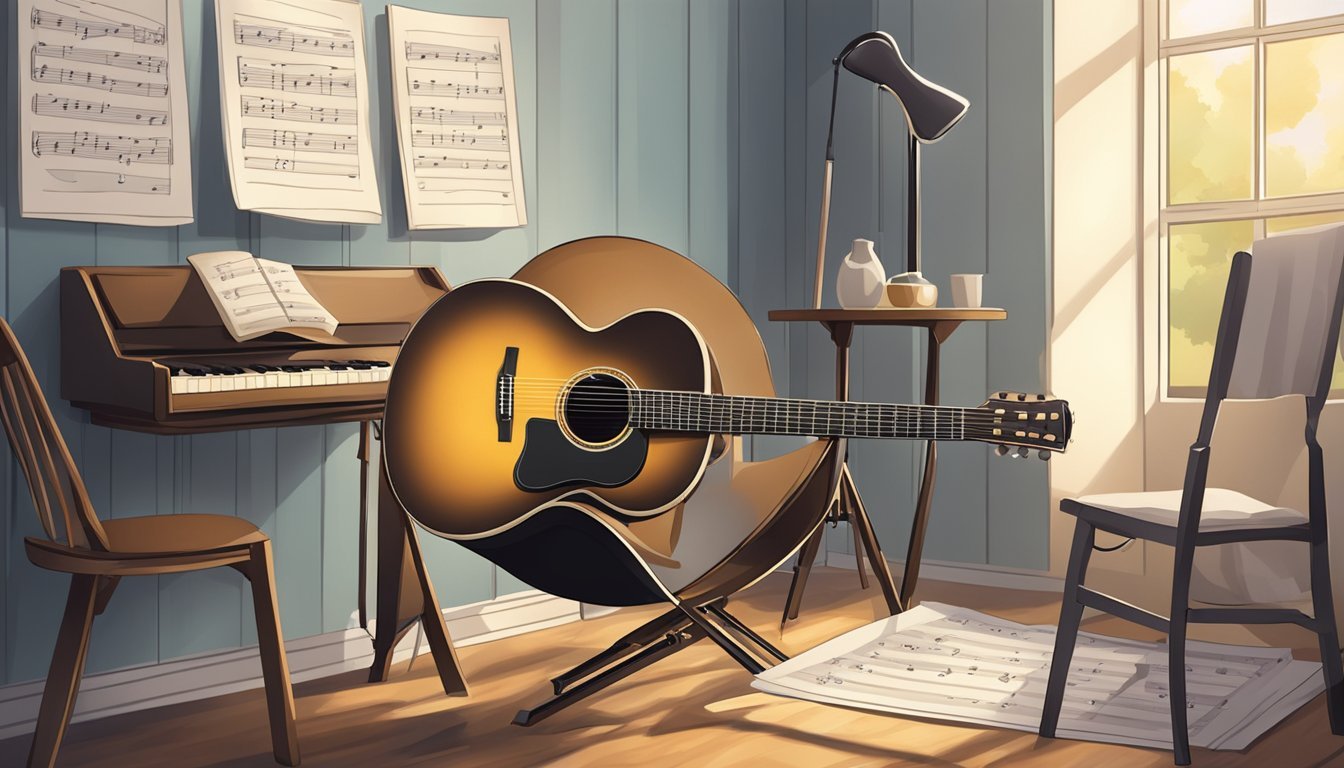Learning to play the guitar can be an exciting journey for anyone, whether you’re looking to impress friends or simply enjoy making music. Understanding the basics and gradually building your skills can help you teach yourself to play guitar and unleash your creativity. With a little practice and the right guidance, you’ll find that picking up this instrument is not as daunting as it seems.

When you’re starting out, choosing the right guitar is just as important as learning the chords.
It doesn’t have to be an expensive investment; beginners can find affordable options that suit their style.
As you get familiar with the instrument, you’ll discover practical techniques that make playing fun and rewarding.
The key is to stay motivated and practice regularly to see your progress.
With the right resources and a positive mindset, you can easily navigate your way through those early stages of guitar playing.
Don’t hesitate to explore videos and articles designed for beginners to help you along the way.
Key Takeaways
- Selecting the right guitar can set the stage for your learning experience.
- Regular practice helps you build and apply your guitar skills effectively.
- Use online lessons and tutorials to enhance your learning journey.
Choosing Your Guitar

Selecting the right guitar is a key step in starting your musical journey.
You’ll need to think about whether you want an acoustic or electric guitar, consider guitar brands, and understand the anatomy of the instrument.
Acoustic vs. Electric
When choosing between an acoustic and an electric guitar, think about your music style. Acoustic guitars are great for folksy and singer-songwriter vibes.
They have a natural sound and are easier to play anywhere since they don’t need amps.
Electric guitars offer more versatility with sound.
They use pickups to amplify sound, letting you experiment with different tones using effects pedals.
However, this means you’ll need extra gear like a guitar tuner and an amplifier.
Consider what kind of music you want to play, as this will guide your choice.
Guitar Brands and Quality
Guitar brands can impact your learning experience.
Well-known brands often offer better quality and support.
Brands like Yamaha, Fender, and Gibson are reputable and provide a range of options.
When looking for a guitar, consider the price range.
Some affordable models can still provide great sound and feel.
Be sure to check the craftsmanship, especially the neck and fretboard.
A well-made guitar will stay in tune and make learning more enjoyable.
Understanding Guitar Anatomy
Understanding the parts of a guitar can help you make an informed choice.
Key components include the headstock, fretboard, and bridge.
The headstock holds the tuners, which help keep your guitar in tune.
Meanwhile, the fretboard has frets that allow you to play different notes.
Make sure the frets are well spaced and comfortable for your fingers.
Also, pay attention to pickups on electric guitars.
They capture the string vibrations and influence the sound.
Look for good-quality guitar strings, as these can affect playability.
Knowing these parts will not only help you choose the right guitar but also enhance your playing experience.
Getting Started with Guitar Basics
Before diving into learning songs, it’s crucial to get a handle on the basics of playing the guitar.
This includes knowing how to tune your guitar, how to hold it properly, and learning some basic chords.
These steps will set you up for a smooth learning experience.
Tuning Your Guitar
Before you play, make sure your guitar is in tune.
The standard tuning for a guitar is E A D G B e, from the thickest to the thinnest string.
Use a tuner or tuning app to adjust the tension on your tuning pegs.
Start by tuning the sixth string (E).
Pluck the string and turn the peg until you hear the correct pitch.
Repeat this for the other five strings.
A well-tuned guitar helps prevent frustration as you learn.
Holding the Guitar
Next, you need to know how to hold your guitar.
Sit up straight and rest the body of the guitar on your right leg if you’re right-handed.
If you’re left-handed, rest it on your left leg.
Use your dominant hand to strum, while your other hand should be positioned on the neck.
The neck should be at a slight angle to give you proper finger placement.
Don’t forget to use a guitar strap for extra support while standing.
This helps keep the guitar stable.
Basic Guitar Chords
Learning chords is fundamental to playing songs.
Start with a few basic guitar chords like G, C, A, and E minor.
- G Chord: Place your fingers on the 3rd fret, starting from the bottom string.
- C Chord: Your index finger goes on the 1st fret of the B string, a bit of a stretch!
- A Chord: Place your fingers on the 2nd fret of the D, G, and B strings.
- E Minor Chord: Simply place your middle finger on the 2nd fret of the A string.
Practice transitioning between these chords to build muscle memory.
Keep your fingers on the tips to avoid muting other strings.
With these basics, you’re well on your way to playing your favorite songs!
Developing Your Skills
Getting better at guitar means working on different aspects of playing.
You’ll want to focus on finger independence, practice chord progressions, and learn how to read guitar tablature.
Each of these skills builds on the others, helping you become a more well-rounded player.
Finger Independence and Strengthening
Building finger independence is key to playing fluidly.
You want each finger to move freely without affecting the others.
Start with simple exercises like the spider walk, where you play each finger one at a time, going up and down the neck.
Try these exercises:
- Finger stretches: Use each finger to press down on different frets.
- Hammer-ons and pull-offs: Add these techniques to basic scales. They’ll make your playing sound smoother.
Regular practice helps strengthen your fingers and improves dexterity.
Aim for a few minutes of focused finger exercises daily.
Chord Progressions and Strumming
Chord progressions form the backbone of most songs.
Start with basic open chords like C, G, D, and A. Practice switching between them smoothly.
A common progression to start with is G-C-D-Em.
Next up is strumming.
Use a metronome to keep a steady beat.
Begin with simple downstrokes, then mix in upstrokes.
Here’s a basic strumming pattern:
- Down, down-up, up, down-up
As you get more comfortable, try varying your strumming rhythms.
This adds more life to your playing!
Reading Guitar Tablature and Playing Single Notes
Guitar tablature (tab) is a simple way to read music for guitar.
It shows you which fret to press on each string.
Start with basic song tabs to get familiar with reading tab efficiently.
To practice picking single notes, start slow.
Choose a note on the first string and pick it cleanly.
Gradually add more notes from your favorite songs.
This will help you develop accuracy in your picking.
Use chord charts alongside tablature to deepen your understanding of song structures.
Combining both will make learning new songs much easier.
Keep working on these skills, and you’ll be playing confidently in no time!
Applying Your Skills

As you progress in learning guitar, applying your skills in practical ways makes a big difference in your growth.
Focusing on songs, exploring music genres, and practicing effectively are key areas that can enhance your journey.
Learning Songs and Building a Repertoire
Learning your favorite songs is a fun way to apply what you’ve learned.
Start with simple tunes that use basic chords you know, like C, G, and D.
Make a list of songs that inspire you and gradually add more to your repertoire.
Playing along with recordings can help you improve timing and rhythm.
As you get comfortable, try to learn guitar solos from songs you love.
This adds variety and keeps things interesting.
Exploring Different Music Genres
Diving into various music genres keeps your guitar skills fresh.
Explore rock, jazz, blues, and folk to find what you love.
Each genre has unique styles and techniques.
For example, rock often features power chords and energetic strumming.
In jazz, you may focus more on intricate chords and music theory.
Experimenting with different genres can also help you learn the musical alphabet, which improves your understanding of music.
Play around with different styles to see what resonates with you.
Practicing Effectively
Creating an ideal learning environment is essential for effective practice.
Set up a cozy space where you feel comfortable playing guitar.
Daily practice is important, even if it’s just for 15-30 minutes.
Focus on a mix of learning new chords and revisiting old ones.
Use tools like metronomes to improve your timing.
Break down difficult sections of a song and practice them slowly.
Don’t forget to have fun! Enjoy the process, and remember that each practice session brings you closer to your goals.
Frequently Asked Questions
Learning guitar comes with plenty of questions.
Here are some common ones that can help you get started and keep moving forward on your musical journey.
What are some effective ways for beginners to learn to play guitar?
Start with the basics by familiarizing yourself with the parts of the guitar.
Online tutorials and beginner lessons can help.
You might also find it useful to practice simple songs to build your confidence.
As you progress, consider learning how to play minor chords, as they add emotional depth to your music.
Incorporating these chords into your practice routine will enhance your overall skills and broaden your repertoire.
Don’t hesitate to seek out additional resources, such as chord charts and instructional videos, to support your learning journey.
Can you suggest resources for learning guitar chords?
There are many resources available online for learning guitar chords.
Websites like Hello Music Theory offer guides for beginners.
You can also find chord charts and apps that make learning easier and more fun.
How can adults best approach learning to play guitar?
As an adult, setting a regular practice schedule can be helpful.
Focus on short practice sessions that fit into your daily routine.
Be patient with yourself and remember that progress takes time.
Is it possible to learn guitar on your own, and if so, how?
Yes, you can learn guitar on your own.
Use online lessons, video tutorials, and guitar apps to guide your learning.
Make sure to practice consistently and track your progress to stay motivated.
Should a beginner attempt to learn guitar from scratch?
How challenging is it to become proficient at playing guitar?
Becoming proficient at guitar takes time and practice.
Everyone learns at their own pace, so don’t get discouraged.
Focus on enjoying the process, and improvement will come with regular effort.

